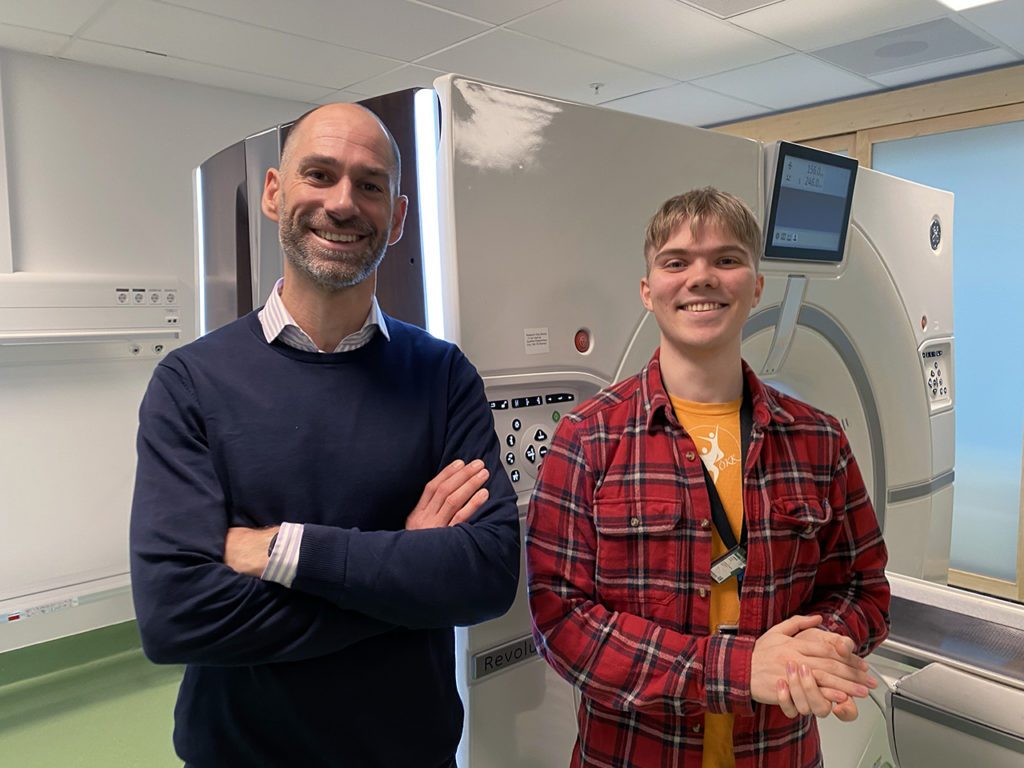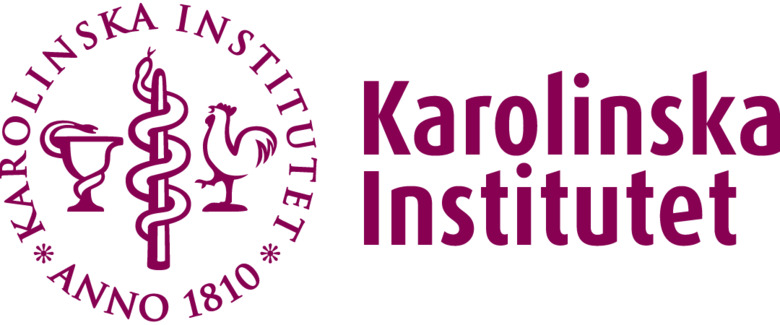Interview: He leads pioneering project for virtual clinical trials of photon-counting CT
The project, funded by the Swedish Foundation for Strategic Research (SSF), is carried out in collaboration with GE Healthcare and is led by Erik Fredenberg, adjunct professor at KTH.

We meet Erik Fredenberg on a Wednesday morning in the Bioclinicum research building, which is co-located with Karolinska University Hospital in Solna. This summer, he became an adjunct professor at KTH and will lead the work on virtual clinical trials with the photon-counting CT machine located in MedTechLab’s CT lab, just a few metres from where we are. The project, funded by the Swedish Foundation for Strategic Research (SSF), is in collaboration with GE Healthcare, which is behind parts of the technology, including the new silicon detectors in the machine.
Congratulations on the new post and the project. What will you be working on?
– Thank you! The project I will be leading is based on a research grant from the SSF and I applied for it about two years ago, as a collaboration between industry and academia. The SSF grant will fund half a day a week of my work and GE Healthcare will provide another half day, so a total of one day a week. Then KTH is the host university for the project, so my employment is there. The project is linked to my existing position at GE Healthcare and will contribute to the exchange between industry and academia. Basically, the project will be carried out as when we wrote the application, but the status has been moved up as the research has progressed further. So, we are in an even better position to deliver now. I may also teach in the form of tutoring students. My workplace will continue to be GE HealthCare’s premises at Alba Nova, where I am already next door to the research group at KTH, and here in MedTechLab’s CT lab at BioClinicum.
Can you tell us more about the project and what it will lead to?
– I started in the field of mammography where we also worked on photo counting. Even then we could see great benefits of photon counting but one limitation was that there were not many applications of the technology in clinical practice. As a developer of new technology, you also need to explain and provide guidance around how it can be used. Photon counting CT can do a great many things, but it is important to also show applications and their benefits, where and how the technology can be useful. And this is precisely why an effective and good technical framework is needed to test all possible applications. This is where virtual clinical trials come in. They need to demonstrate in a coherent environment how things like improved iodine contrast can affect everyday clinical practice. Results from such technical tests can also serve as a basis for subsequent clinical studies with patients. There are a host of entirely new applications that can be achieved through the improved spatial resolution provided by photon counting CT and the ability to measure the energy of photons, i.e. the “colour” of radiation. A new world is opening up and there are many ideas and possibilities. But as I said, they need to be tested. GE already has a simulation tool for CT imaging that we are further developing for photon counting and which we will also validate with measurements in the lab. With that we are starting to test simpler applications, in the longer term we want to be able to run complete virtual clinical trials and then the vision is to get them so good that they can become part of a regulatory trial.
Why are virtual clinical trials needed – there are regular ones?
– Clinical trials are the best, but they are expensive and take a long time. Plus, after all, it involves radiation of patients, which should be minimized. So, there is a need to test applications technically, virtually, before starting a clinical trial. The term virtual clinical trial has been around for a few years and started, as far as I know, in mammography. In virtual clinical trials, the whole imaging process is simulated in a computer. There is a software phantom, a virtual human being with organs, and then you simulate radiation, detection, even the observation process, i.e. the work of the radiologist or other expert can be put into the simulation. Eventually this will be used as part of a regulatory trial. The US FDA, among others, is working to get there eventually.
How can your research project contribute to the development of CT?
– Hopefully what we do here will rub off on others working in the field. There is a lot going on around the development of photon counting CT and as we demonstrate it and now take it to clinical simulations, it may increase interest in the region and lead to more research. This is the next big step in CT since the introduction of semiconductor detectors in the 1980s. After all, CT is also the largest X-ray modality in the world today. That we are on the verge of something revolutionary is also proven by the fact that the big companies are now investing more than ever in the development of photon-counting CT.
What do you think of the research infrastructure, the CT lab, that is here?
– It’s invaluable and works incredibly well. We’re running a clinical trial already and the collaboration with the hospital is working smoothly with patients and our “gantry”, the machine that’s here. Before, it was located at Alba Nova and we took pictures of the first patients there, but it was quite uncomfortable. Doctors, nurses, and patients are all gathered here. The rest of GE Healthcare and others we work with also think it’s a great location to be able to work with Karolinska University Hospital. The Bioclinicum itself is also an exciting bridge between different stakeholders – healthcare, academia, and industry. It’s also nice that the CT lab is geographically close to our premises at GE Healthcare and not in a completely different part of the country. Here we have our own premises where we can meet physicians physically in peace and quiet and talk to them about the images. They don’t have to go to Alba Nova, which is important because they have their clinical routine. You really want to be able to give them the benefit of not having to travel away from the hospital and their patients.

